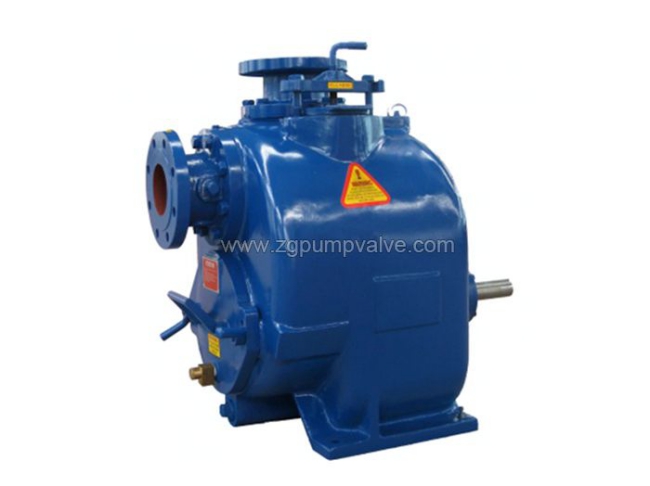Learn - Oct. 09, 2020
The principle of the self-priming pump is to use the flow momentum of the water, and the impeller drives the pump impeller to pump the water to the river bank. The self-priming pump can be thrown into the river to pump water, but it must be in a place where there is a rapid flow or a drop.
Self-priming pumps are different from general centrifugal pumps. Before the centrifugal pump works, the pump body and the water inlet pipe must be filled with water into a vacuum state. When the impeller rotates quickly, the blades prompt the water to rotate quickly, and the rotating water flies away from the impeller under the action of centrifugal force. After the water is thrown out, the central part of the impeller forms a vacuum area. The water in the water source is pressed into the inlet pipe through the pipe network under the action of atmospheric pressure (or water pressure). In this way, continuous water pumping can be realized.
The self-priming pump does not need to be filled with water, which is the origin of the self-priming pump.

Self-priming principle of self-priming pump: due to the special design of the self-priming pump housing. Its sealing performance is higher than that of ordinary centrifugal pumps, and the water in the pump casing will not be automatically emptied after the motor is stopped. The motor drives the turbine to rotate at a high speed, quickly forming a negative pressure (vacuum) in the pump. Use atmospheric pressure to press the water to the pump casing, and then centrifuge the head. Therefore, the suction stroke of the self-priming pump will not exceed one atmosphere, about 11M.
The self-priming height of the pump increases with the increase of the circumferential speed u2 of the impeller, but when the maximum self-priming height is reached, the number of revolutions increases and the self-priming height no longer increases. At this time, only the self-priming time is shortened; when the number of revolutions When descending, the self-priming height will decrease accordingly.
There are many structural types of self-priming pumps. Among them, the working principle of the external-mixing self-priming pump is: fill the pump casing with water before starting the pump (or there is water in the pump casing itself). After starting, the impeller rotates at a high speed to make the water in the impeller channel flow to the volute. At this time, a vacuum is formed at the inlet and the water inlet check door is opened. The air in the suction pipe enters the pump and reaches the outer edge through the impeller channel.
On the other hand, the water discharged into the air-water separation chamber by the impeller flows back to the outer edge of the impeller through the left and right return holes. The water flowing back from the left return hole is ejected into the impeller channel under the action of pressure difference and gravity and is crushed by the impeller, mixed with the air from the suction pipe, thrown to the volute and flows in the direction of rotation. Then it merges with the water from the right return hole and flows along the volute.
The above information is provided by double suction pump factory.